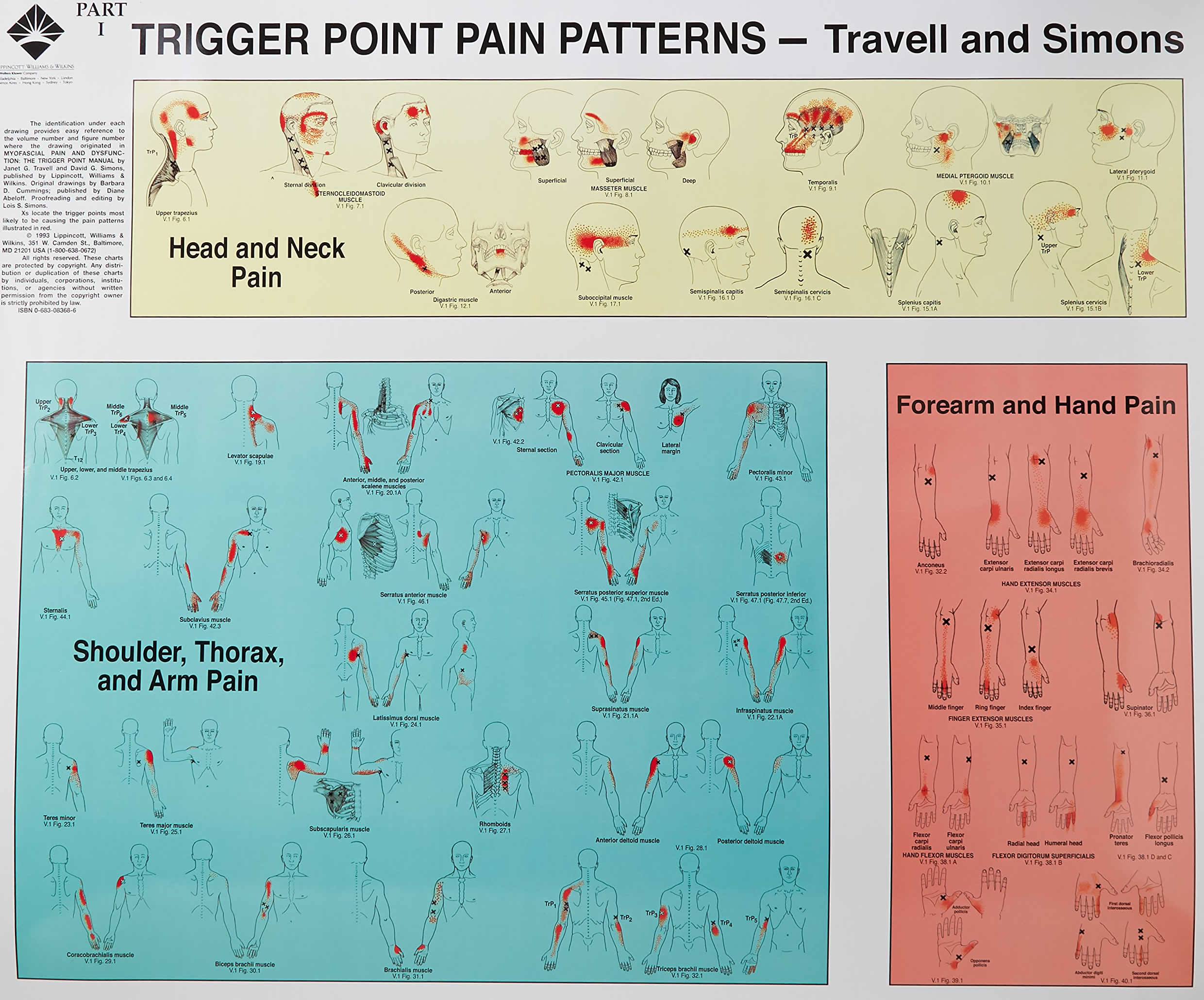

#Travell and simons myofascial pain critera full
Painful limitation to full passive range of motion for affected muscle.Pressure on tender nodule induces pain that patient recognizes as experienced pain pattern (identifies as active tender point).Exquisite spot tenderness of nodule in taut band.

#Travell and simons myofascial pain critera manual
Manual palpation, however, is considered to be subjective and unreliable and special training in palpation techniques is usually required to obtain a common agreement in the judgment of palpation criteria. The diagnosis is dependent upon eliciting a detailed history, exhaustive physical examination with manual palpation of soft tissue, and clinical judgment.

No laboratory test or imaging technique has been established as diagnostic of MPS. Not surprisingly, the economic burden of industrial lost time and medical compensation is substantial. While active MTrPs will be most commonly found in vigorous individuals between the ages of 31 to 50, the elderly population with a reduced level of activity, stiffness, and restricted range of motion, still harbor latent MTrPs. Some reports indicate the presence of latent MTrPs in 45% of asymptomatic male and 54% female subjects. Bennet has reported that 44 million individuals in the United States, alone, have an active MTrP. D, pain pattern of the inferior trigger point, which may also refer pain down the arm. C, anatomical view: most common, superior, location of trigger points (upper X) and inferior location (lower X). A, back view of the pain pattern from trigger points in their most common location within the axillary portion of the muscle. Referred pain patterns (essential portion is solid red, spillover portion is stippled red) referred from trigger points (Xs) in the right latissimus dorsi muscle.


 0 kommentar(er)
0 kommentar(er)
